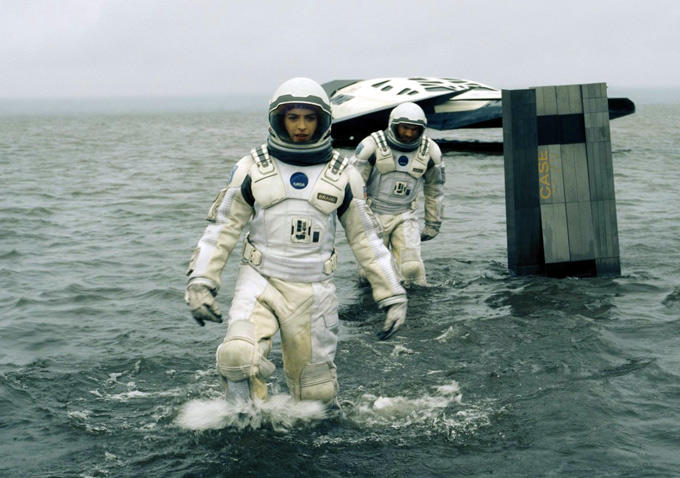
When it comes to relation between the accuracy of a piece of entertainment and our enjoyment factor, we’ll just refer to this inspired tweet, but we do admit it can be amusing to see what the experts in a certain field think of a director’s depiction. When Christopher Nolan announced he would be directing Interstellar, based on an idea by physicist Kip Thorne, it was a given that Neil deGrasse Tyson would chime in with his thoughts, having done so for last year’s Gravity.
Following the film’s release last week, late last night the astrophysicist took to Twitter to post a myriad of thoughts, from its relation to 2001: A Space Odyssey to its use of wormholes to its accuracy of Einstein’s theories. Then, this morning, he stopped by CBS to go a little more in-depth, as well as naming his favorite scientific depiction in film (hint: it also stars Matthew McConaughey). Check out his thoughts below (hat tip to Vulture), along with a 45-minute conversation with the cast, and for more on the film, listen to our in-depth discussion here.
In #Interstellar: And in the real universe, strong gravitational fields measurably slow passage of time relative to others.
— Neil deGrasse Tyson (@neiltyson) November 10, 2014
In #Interstellar: Experience Einstein’s Relativity of Time as no other feature film has shown. — Neil deGrasse Tyson (@neiltyson) November 10, 2014
In #Interstellar: Experience Einstein’s Curvature of Space as no other feature film has shown.
— Neil deGrasse Tyson (@neiltyson) November 10, 2014
In #Interstellar: The producers knew exactly how, why, & when you’d achieve zero-G in space. — Neil deGrasse Tyson (@neiltyson) November 10, 2014
In #Interstellar: You observe great Tidal Waves from great Tidal Forces, of magnitude that orbiting a Black Hole might create
— Neil deGrasse Tyson (@neiltyson) November 10, 2014
In #Interstellar: You enter a 3-Dimensional portal in space. Yes, you can fall in from any direction. Yes, it’s a Worm Hole. — Neil deGrasse Tyson (@neiltyson) November 10, 2014
In #Interstellar: They reprise the matched-rotation docking maneuver from “2001: A Space Odyssey,” but they spin 100x faster.
— Neil deGrasse Tyson (@neiltyson) November 10, 2014
In #Interstellar: Of the leading characters (all of whom are scientists or engineers) half are women. Just an FYI. — Neil deGrasse Tyson (@neiltyson) November 10, 2014
In #Interstellar, if you didn’t understand the physics, try Kip Thorne’s highly readable Bbook “The Science of Interstellar”
— Neil deGrasse Tyson (@neiltyson) November 10, 2014
In #Interstellar: They explore a planet near a Black Hole. Personally, I’d stay as far the hell away from BlackHoles as I can
— Neil deGrasse Tyson (@neiltyson) November 10, 2014
What do you think of Tyson’s thoughts on the film?

